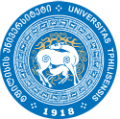Authorisation

Determination of the associative activity of acrocentric chromosomes and polymorphic variants of the GSTT1, GSTM1 genes in sensitive and resistant forms of pulmonary tuberculosis
Author: Ketevan GogidzeKeywords: Tuberculosis, Epitalon, glutathione S-transferase
Annotation:
Pulmonary tuberculosis (TB), as a chronic infectious disease, is studied in many directions due to its global distribution and high lethality associated with it. Recently, genetic studies related to tuberculosis have gained special relevance as a result of identification of the role of the genotype of patients in the development of TB. As is known, TB is closely associated with all parts of the body's immune system. From genetics point of view, tuberculosis, like the majority of infectious diseases, belongs to multifactorial diseases. In its development the role of hereditary predisposition is very high. Significant variation of epigenetic parameters is typical for this kind of diseases in general. On the one hand, it is of interest to compare the nature of this variation in resistant and sensitive forms of TB, which may play a role in the timely selection of an appropriate treatment strategy. On the other hand, in light of the normalization of altered genomic parameters of cells (T lymphocytes) involved in the primary response of the immune system by oligopeptides of a regulatory nature shown for hereditary predisposition diseases, it is promising to test these oligopeptides in resistant and sensitive forms of TB. TB as a multifactorial disease develops as a result of the interaction of a large number of genes and many environmental factors. If in the early years the development of different clinical forms of TB, namely, sensitive and resistant forms, was mainly associated with the sensitivity of the pathogen to the first-line drugs used in anti-tuberculosis therapy, in the literature of recent years, more and more attention is paid to the genetic constitution of the individual. In this regard, the role of genes involved in the biotransformation of xenobiotics is particularly highlighted. Due to the relevance of studying the role of genes involved in the transformation of xenobiotics and epigenetic variation of individual's genome in the development of different forms of pulmonary tuberculosis, the aim of the given part of the dissertation work was: evaluation of changes in the differential activity of ribosomal genes and their correction with regulatory oligopeptides, and determination of carrying of polymorphic variants of GSTT1 and GSTM1 genes in lung Tuberculosis sensitive and resistant forms. As the research material for the presented work, there were used sensitive (20 individuals) and multiresistant (20 individuals) peripheral blood lymphocyte culture cells of persons who have primarily contracted tuberculosis. Lymphocyte cultures of 10 clinically healthy middle-aged individuals were used as control. T-lymphocytes are an important part of organismal immunity, therefore, peripheral blood lymphocyte culture cells in relation to lung TB are quite an adequate experimental model. Oligopeptides epitalon and livagen and livagen-cobalt mixture were used as chromatin modifying factors. As a genomic parameter, the differential association activity of acrocentric chromosomes during resistant and sensitive forms of TB was studied by counting the organizers of silver-stained nucleoli of chromatids. It was shown that the value of this indicator is slightly reduced in both studied forms of TB compared to the control. There was only a downward trend. Exposure to chromatin-modifying agents did not have a significant effect on the detected image. A statistically significant decrease in the frequency of association compared to the control was noted only when taking into account 2-point Ag-positive chromatids. which indicates that both forms of TB are characterized by increased heterochromatinization of the satellite chains of acrocentric chromosomes and, accordingly, a decrease in the activity of ribosomal genes. Based on the above, a decrease in protein synthesizing activity in cells is also observed. Regarding the analysis of polymorphic variants of GSTT1 and GSTM1 genes, the results show that the double null genotype in individuals with both forms is significantly higher than the corresponding data in healthy individuals (12.5±2.1 and 11.1±1.7 for TB; 3 ±0.1 for control), at the same time, there was found a tendency to increase the rate of double null genotype of GSTT1 and GSTM1 genes observed in the case of TB resistant form compared to the similar rate in patients with sensitive form. It is concluded that the results of the study of polymorphic variants of GSTT1 and GSTM1 genes in TB once again emphasize the importance of genotype in the development of the disease.

